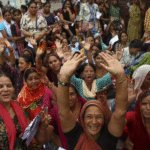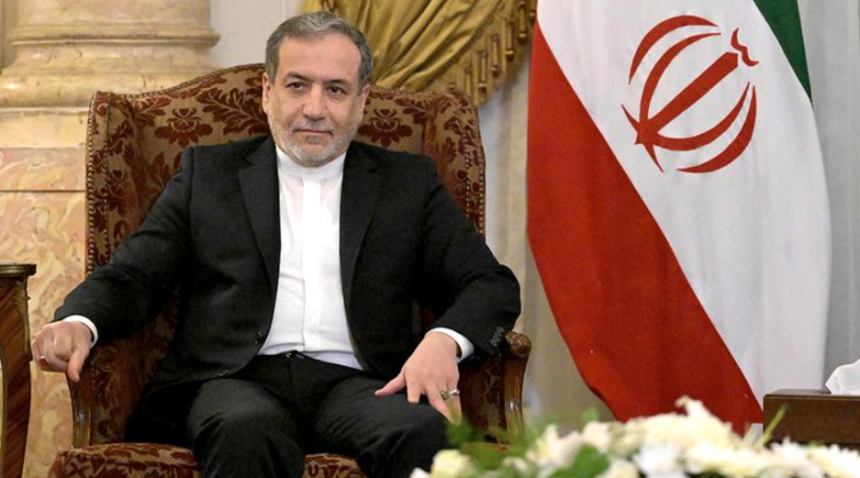Hamas volatile and politically charged landscape of West Asia, leaders often become symbols of larger movements, serving as rallying points for ideological and geopolitical struggles. The recent killing of a senior Hamas leader has sparked intense reactions across the region, and one of the most significant voices to emerge is that of Iran’s Foreign Minister. In a passionate and highly charged statement, he declared the slain Hamas chief “an inspiration for West Asia,” framing the death as not just a tragic event but a moment of opportunity for renewed resistance and defiance against Israel and its allies.
This statement is more than just a tribute to a fallen leader. It is part of a larger narrative that speaks to Iran’s long-standing support for Hamas and other militant groups in the region, as well as its opposition to Israeli and Western policies in the Middle East. For Iran, the death of the Hamas chief does not signal the end of the Palestinian cause but rather a renewed chapter in the struggle. It also reflects the broader geopolitical and sectarian tensions that continue to shape the dynamics of West Asia.
1. The Hamas Leader’s Death: A Turning Point
The slain Hamas leader, who had been a prominent figure in the Palestinian resistance movement, was killed in a targeted airstrike by Israeli forces, sparking immediate outcry from his supporters and allies. As a high-ranking official within Hamas, he had played a key role in coordinating military operations, strategic planning, and ideological direction for the group. His death marks a significant blow to the organization, but as Iran’s Foreign Minister pointed out, it is not the end of the story.
According to Iran, the Hamas leader’s legacy will live on in the hearts and minds of the Palestinian people and their allies across West Asia. In his statement, the Foreign Minister emphasized that the slain leader’s dedication to the cause of Palestinian liberation has made him a symbol of resistance against Israeli occupation. His death, therefore, should be seen not as a defeat but as a rallying cry for renewed efforts to achieve the goals he fought for.
This sentiment is not unique to Iran. Across West Asia, there has been an outpouring of grief and anger over the killing, with many viewing it as yet another example of the harsh realities of the Israeli-Palestinian conflict. For Iran and other regional actors, the Hamas chief’s death highlights the broader issues at play: the struggle for Palestinian statehood, the role of foreign powers in the region, and the ongoing tensions between Israel and its neighbors.
2. Iran’s Support for Hamas: A Long-Standing Alliance
Iran’s relationship with Hamas has long been a point of contention in the Middle East and beyond. While Hamas is a Sunni Islamist organization, and Iran is a predominantly Shia Muslim country, their mutual opposition to Israel has forged a strong alliance between the two. Over the years, Iran has provided financial, military, and logistical support to Hamas, helping to bolster the group’s ability to wage its campaign against Israel.
In his recent remarks, Iran’s Foreign Minister reaffirmed his country’s commitment to supporting Hamas and the broader Palestinian cause. He emphasized that Iran would continue to stand by Hamas in its struggle against what he described as the “Zionist regime” and its allies. For Tehran, Hamas is not just a militant group; it is a key player in the broader resistance movement that seeks to challenge Israeli dominance in the region and push back against U.S. influence. 
This support for Hamas is part of Iran’s broader strategy in West Asia, where it has positioned itself as a champion of anti-Israel resistance movements. In addition to Hamas, Iran also backs Hezbollah in Lebanon and other militant groups across the region. For Iran, these alliances are not just about ideology but also about geopolitics. By supporting groups like Hamas, Iran can project its influence beyond its borders and challenge its regional rivals, including Saudi Arabia and Israel.
3. The Reaction in West Asia: A Divided Region
The death of the Hamas leader has sparked a range of reactions across West Asia, highlighting the deep divisions that continue to define the region. On one side are those who see the slain leader as a martyr and a hero of the resistance against Israeli occupation. In countries like Iran, Lebanon, and parts of Syria, there have been public displays of mourning and solidarity with Hamas, as well as calls for retaliation against Israel.
On the other side, however, there are those who view Hamas and its tactics with skepticism or outright opposition. In many Gulf states, which have recently sought to normalize relations with Israel through agreements like the Abraham Accords, there is little appetite for renewed conflict with Israel. These countries have shifted their focus towards economic development and regional stability, and they see groups like Hamas as obstacles to peace rather than champions of liberation.
This divide reflects the broader geopolitical realignments taking place in West Asia. While countries like Iran and its allies continue to support the Palestinian cause through militant resistance, other states have chosen a different path, seeking diplomatic and economic engagement with Israel in the hopes of securing a more stable and prosperous future. The killing of the Hamas leader has brought these tensions to the forefront, as regional actors navigate the delicate balance between their domestic interests and their positions on the Israeli-Palestinian conflict.
4. The International Response: Calls for Restraint and Peace
While Iran and other supporters of Hamas have called for renewed resistance in the wake of the leader’s death, the international community has largely urged restraint. The United Nations, the European Union, and other global organizations have expressed concern about the potential for escalation in the region, warning that further violence could have devastating consequences for civilians on both sides.
The United States, which has long been a staunch ally of Israel, has also weighed in on the issue. In a statement, the U.S. State Department condemned the actions of Hamas and reiterated its support for Israel’s right to defend itself against terrorist threats. At the same time, the U.S. called for a peaceful resolution to the conflict, urging both sides to return to negotiations and seek a lasting solution to the Israeli-Palestinian dispute.
For many in the international community, the death of the Hamas leader is yet another reminder of the urgent need for a comprehensive peace process in West Asia. Decades of conflict have left the region deeply scarred, with millions of Palestinians living under occupation or in exile, and countless Israelis living in fear of rocket attacks and other forms of violence. Without a concerted effort to address the underlying causes of the conflict, the cycle of violence is likely to continue, with devastating consequences for all involved.
5. The Future of Hamas: A Movement in Transition
The death of a senior leader like the Hamas chief is undoubtedly a significant blow to the organization, but it is unlikely to derail the movement entirely. Over the years, Hamas has proven to be a resilient and adaptable organization, capable of weathering setbacks and continuing its campaign against Israel. The group’s decentralized structure, combined with its deep-rooted support in Palestinian society, makes it difficult to eliminate through targeted assassinations or military strikes.
In the wake of the leader’s death, Hamas will likely seek to rally its supporters and strengthen its ranks. The group’s leadership will need to navigate the challenges of internal succession while maintaining its focus on the broader goals of resistance and liberation. At the same time, Hamas will need to contend with the evolving dynamics of the region, including the shifting alliances and power struggles that continue to shape West Asia.
For Iran, the death of the Hamas leader is not the end of the movement but rather an opportunity for renewal. In his statement, the Iranian Foreign Minister emphasized that the slain leader’s legacy would inspire future generations of resistance fighters, and that Iran would continue to support Hamas in its struggle against Israel. This rhetoric suggests that Iran sees the death as a moment to galvanize its allies and push forward with its regional agenda.
6. Conclusion: A Symbolic Death in a Larger Struggle
The death of the Hamas chief is a deeply symbolic moment in the ongoing Israeli-Palestinian conflict and the broader geopolitical struggles of West Asia. For Iran and other supporters of Hamas, the slain leader represents a martyr for the cause of Palestinian liberation and an inspiration for continued resistance against Israel. His death has galvanized the movement and sparked calls for renewed efforts to achieve the goals of the resistance.
At the same time, the reaction to the killing has highlighted the deep divisions that continue to define West Asia. While some view the slain leader as a hero, others see his death as a necessary step towards peace and stability in the region. As the region navigates these tensions, the international community will need to play a critical role in preventing further escalation and promoting a peaceful resolution to the conflict.
Ultimately, the death of the Hamas leader is not just an isolated event but part of a larger struggle that has been playing out in West Asia for decades. Whether it leads to renewed violence or opens the door for new opportunities for peace remains to be seen, but one thing is clear: the future of the region will continue to be shaped by the legacy of leaders like the slain Hamas chief. ALSO READ:-Sinwar’s Killing: An ‘Opportunity to Seek Path to Peace,’ Says Biden 2024





